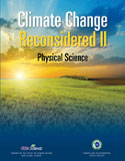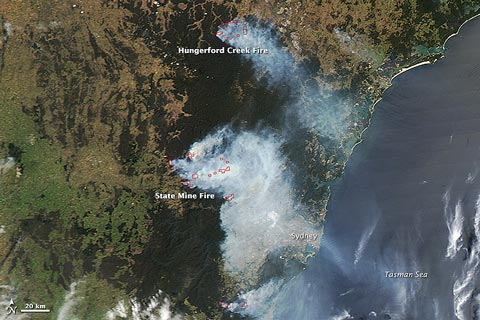 In this week’s Daily Blog post — Typhoon tears: we need an emergency climate pathway — I focus on the tragic events in the Philippines through the lens of the moving speech at COP19 in Warsaw by Yeb Saño, the Philippines Climate Change Commissioner. Comments over there, please.
In this week’s Daily Blog post — Typhoon tears: we need an emergency climate pathway — I focus on the tragic events in the Philippines through the lens of the moving speech at COP19 in Warsaw by Yeb Saño, the Philippines Climate Change Commissioner. Comments over there, please.
Category: Climate science
Poland or Coaland? Climate talks about to begin in Warsaw

Another year, another round of climate talks. It’s the 19th Conference of Parties to the UN Climate Convention and we’re back in Poland, the scene of an almost complete non-event in 2008, the year before Copenhagen.
It’s Eastern Europe’s turn to host another meeting, and nobody else was prepared to put their hand up, so we’re back in the land of coal, in the country that has rallied their biggest coal companies to sponsor the conference, and which is dragging the whole of the EU down to their level as they refuse to accept stronger targets. I suspect #coaland will be a well-used hashtag by the end of this.
Usually when you come to a meeting like this, the town is full of banners and signs that a climate meeting is being hosted, but there’s not much sign of it here in Warsaw, except this rather confusing industry advertisement at the airport.
Next weekend there’s a World Coal Association conference in town, being addressed by UNFCCC Executive Secretary Christian Figueres, who turned down a talk to youth at the Powershift conference in favour of talking with Big Coal. She’s assured them it’s because she wants to “talk frankly” – let’s hope she does.
Last month the Polish hosts were caught posting a news piece heralding the melting of the Arctic as a new opportunity to explore for yet more fossil fuels. While The YesMen (in a specacular own-goal, in my opinion) tried to claim the piece as their own, it was indeed the Polish Government’s own work. Given this government is chairing the talks, it’s not looking terribly hopeful.
Meanwhile in the Philippines, Cyclone Haiyan, the strongest tropical cyclone ever recorded, has caused a terrible loss of life that’s still being counted – and major damage. With winds at 195mph as it made landfall, it beat the 1969 record, according to Jeff Masters’ blog. Sea surface temperatures were up to 1.5degC above normal.
What role will the science have in these talks? Will the IPCC’s recent working group 1 conclusions make a difference? Figueres has already confirmed the IPCC’s carbon budget figures will not be on the agenda. Continue reading “Poland or Coaland? Climate talks about to begin in Warsaw”
Heartland’s Big Book Of Lies About Climate Change cuts no ice, thanks to Don Easterbrook
 Over the weeks since the release of the first section of the IPCC’s Fifth Report, the Heartland Institute — the Chicago-based extreme right wing and free-market propaganda outfit that has done so much to promote climate denial — has been trying to get media traction for its latest Not-the-IPCC report (NIPCC: the Nongovernmental International Panel on Climate Change), Climate Change Reconsidered 2: Physical Science. Heartland describes CCR2 as…
Over the weeks since the release of the first section of the IPCC’s Fifth Report, the Heartland Institute — the Chicago-based extreme right wing and free-market propaganda outfit that has done so much to promote climate denial — has been trying to get media traction for its latest Not-the-IPCC report (NIPCC: the Nongovernmental International Panel on Climate Change), Climate Change Reconsidered 2: Physical Science. Heartland describes CCR2 as…
… an independent, comprehensive, and authoritative report on the current state of climate science.
The truth is somewhat more prosaic. CCR2, like its predecessors, is an extended effort in cherry-picking and misdirection designed to demonstrate that, as Heartland puts it:
…the human effect is likely to be small relative to natural variability, and whatever small warming is likely to occur will produce benefits as well as costs.
For a detailed take-down of the NIPCC’s main arguments, take a look at Graham Wayne’s Notes for Educators, prepared as a response to an effort by Heartland to push CCR2 to schools in the US. Wayne notes:
The NIPCC report is akin to a confidence trick. It is pseudo-science, badly presented, made difficult to assess or check, and depends on ‘blinding the reader with science’ that may look credible until you actually try to verify those claims against the peer-reviewed published literature.
Climate statistician Tamino was equally unimpressed, suggesting that the NIPCC would be better designated the ICP – for Intentional Cherry-Picking in service of a predetermined conclusion.
My interest in the latest NIPCC “report” was piqued by the discovery that Don Easterbrook, the retired geologist with a long track record of misunderstanding and misrepresenting the Greenland ice core temperature record, was the lead author of chapter 5, Observations: The Cryosphere [pdf]. The NIPCC is clearly not blessed with an overabundance of qualified authors if they have to rely on Easterbrook as an expert on the cryosphere. Worse, his co-authors are two other retired geologists with little or no domain expertise: Cliff Ollier from Western Australia, and Bob Carter, a marine stratigrapher and all-purpose climate denier who never saw an argument against warming that he didn’t like ((Carter is also one of the lead authors of the full report.)).
My first reaction to a quick skim through the chapter was pretty much the same as everybody else: this was cherry-picking taken to an extreme. To make sure that I was on the right track, I asked two real ice experts — Greenland maven Jason Box, and glaciologist Mauri Pelto — to take a quick look. Their reaction was scathing.
Where the wind blows, it rains: Arctic warming and wacky jetstream ruins European summers
The dramatic loss of summer sea ice in the Arctic has prompted a lot of research interest in the way that this is affecting weather patterns around the northern hemisphere. The latest contribution is Influence of Arctic sea ice on European summer precipitation, by Dr James Screen of the University of Exeter [PhysOrg]. In this “video abstract”, he explains how reductions in Arctic sea ice affect the position of jetstream — the ribbon of winds winding around the planet that guides weather systems — bringing more summer storms to Western Europe, and a recent run of record-setting wet summers to the UK. But as he points out, the effects are planet-wide:
The impacts are not just over northwest Europe. Actually in the model, what we find is that whilst the sea ice loss increases rainfall over northwest Europe, we actually find drier conditions over Mediterranean Europe. Also the jet steam shifts over North America, which can have implications for the weather there too.
Dr Screen’s study underlines a point that I have been making for some time: rapid climate change is not something theoretical that will happen in the future — it’s happening now and we’re feeling the effects. Warming in the Arctic is driving sea ice loss, and the atmospheric consequences are changing the shape of the weather right round the northern half of the planet.
Also interesting, and also looking at jetstream patterns is Probability of US heat waves affected by a subseasonal planetary wave pattern, in which the authors find that US heatwaves might be predictable 15-20 days earlier than at present by monitoring a particular jetstream wave pattern. [Science Daily]
It’s worth noting that an especially vigorous jetstream directed and helped to intensify the recent huge European storm that hammered the UK, Germany and Denmark, killing 16 people and causing huge amounts of damage. Christopher Burt at WeatherUnderground provides a handy overview of the storm that has four names — St Jude, Christian, Simone and Carmen. The storm centre moved 2,000 km in 26 hours, a remarkable pace of 77 kph.
Australia’s burning – again
Smoke from the bush fires burning in the Blue Mountains blows over Sydney in this NASA Earth Observatory image captured yesterday. The scale of the fires and their impact on the skies over Sydney and much of New South Wales is prompting much discussion in Australia about the link between weather, climate warming and wildfires, and bringing international pressure to bear on new PM Tony Abbott’s plans to scrap carbon pricing. Here’s researcher Roger Jones, writing in The Conversation:
We found that fire danger in Victoria increased by over a third after 1996, compared to 1972-1996. The current level of fire danger is equivalent to the worst case projected for 2050, from an earlier analysis for the Climate Institute.
While it’s impossible to say categorically that the situation is the same in NSW, we know that these changes are generally applicable across south-east Australia. So it’s likely to be a similar case: fire and climate change are linked.
This early start to the fire season comes after a year of record warmth in Australia — the hottest summer on record, the hottest 12 month period (to September), and it’s looking odds on that calendar 2013 will be the warmest on record. NSW also had its second warmest winter on record, which helped to dry soils out more than usual. With summer still a month away, the prospect for SE Australia’s fire-prone states looks grim.
For historical background on Aussie bush fires, see this overview from Weather Underground expert Chris Burt, and keep up to date with excellent analysis at The Conversation by following the NSW bushfires 2013 tag.
[Update: For pithy comment, do not miss today’s First Dog On The Moon ((Do something about climate change you disingenuous muppet!)). ]


You must be logged in to post a comment.